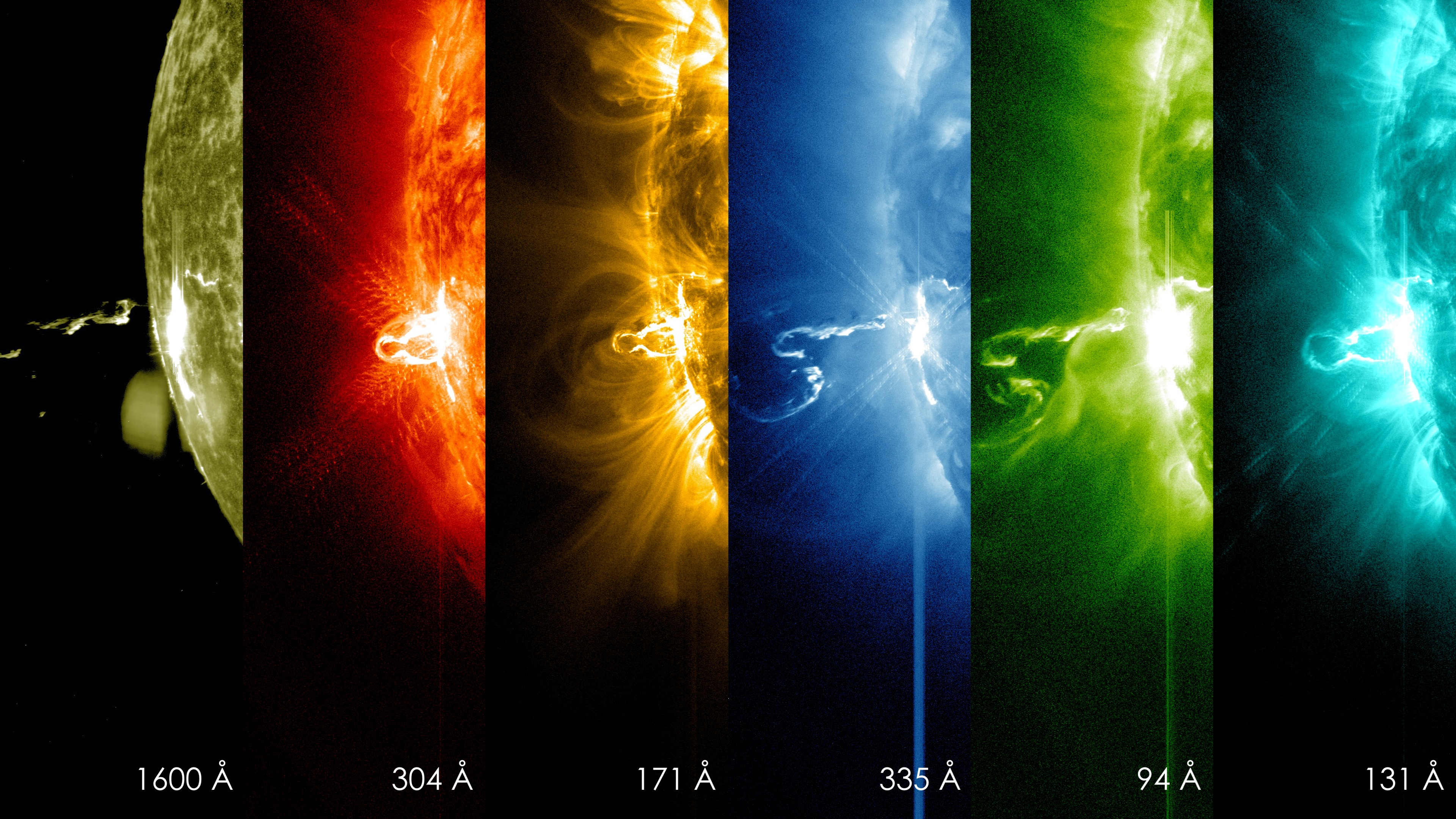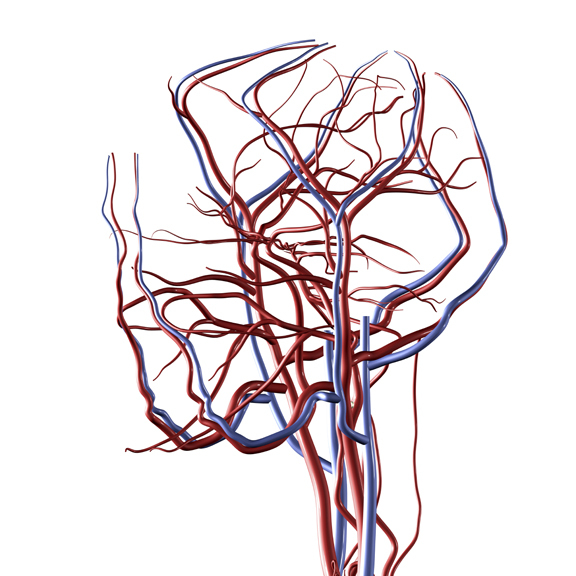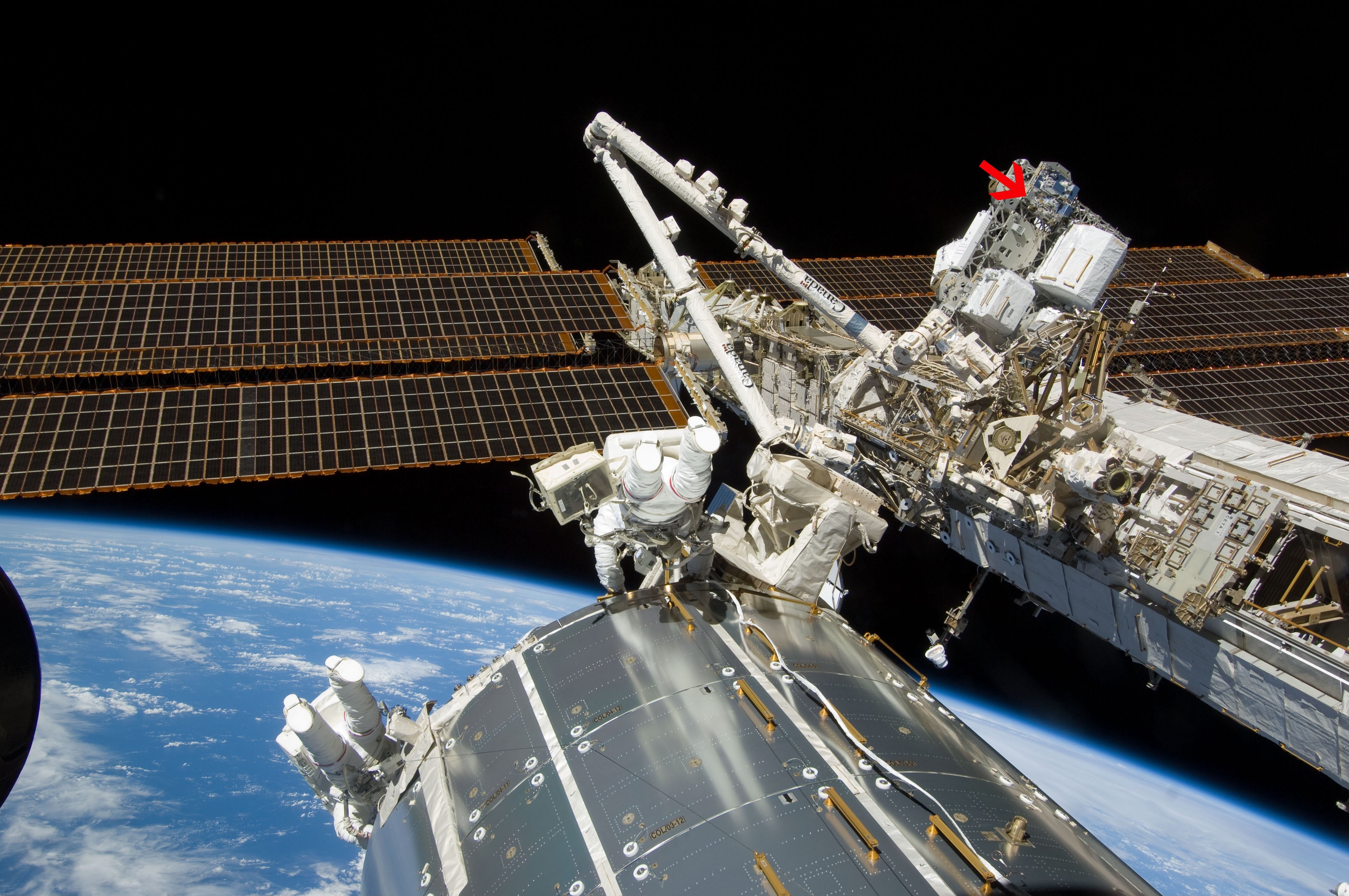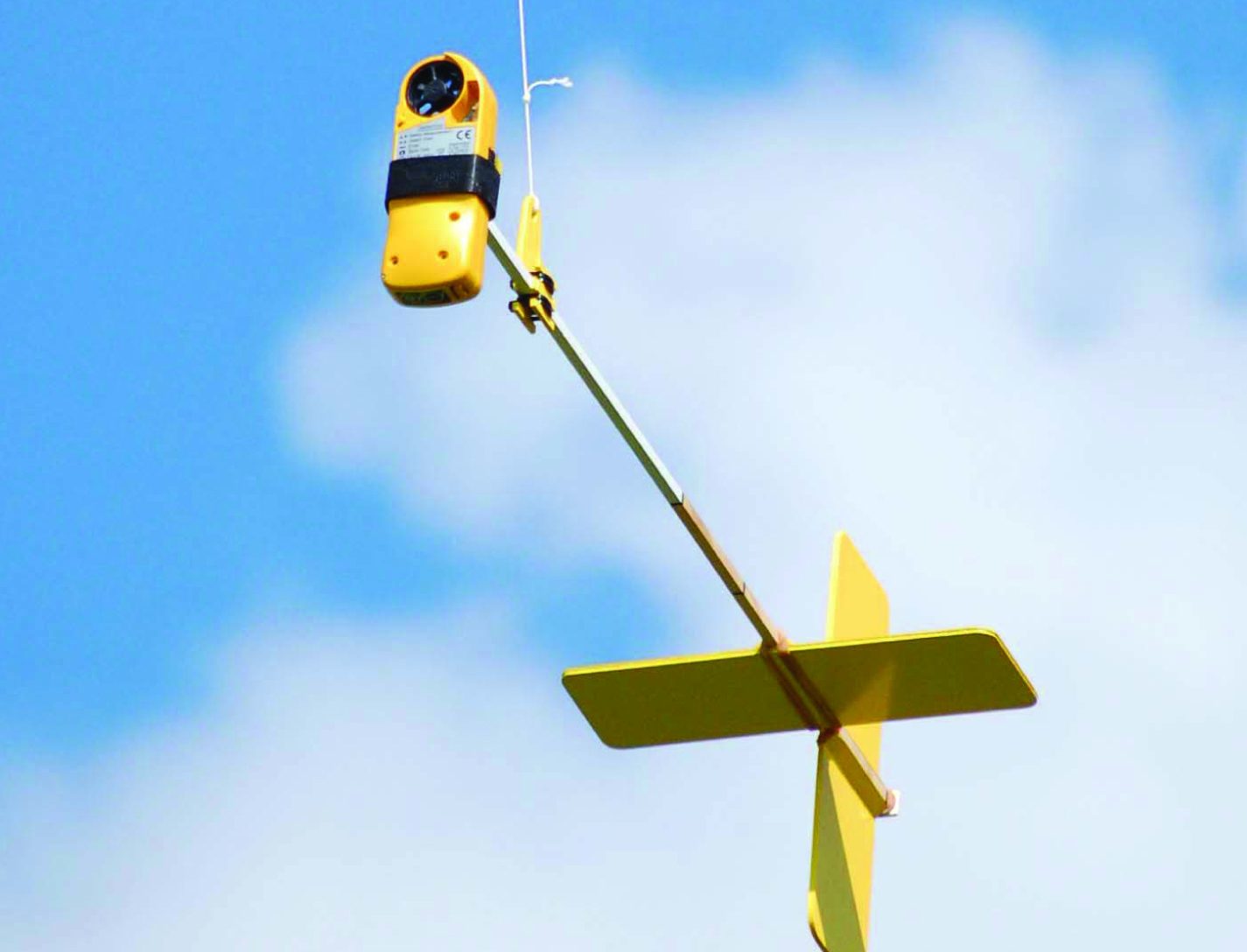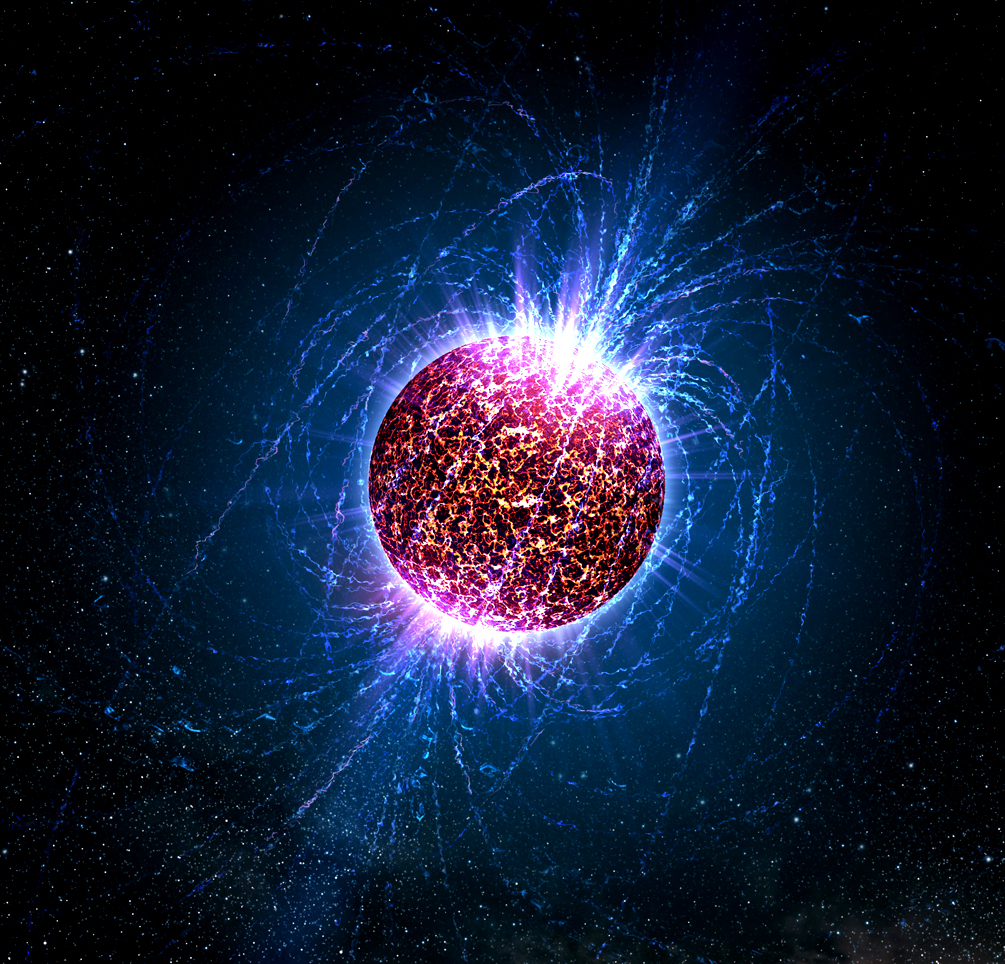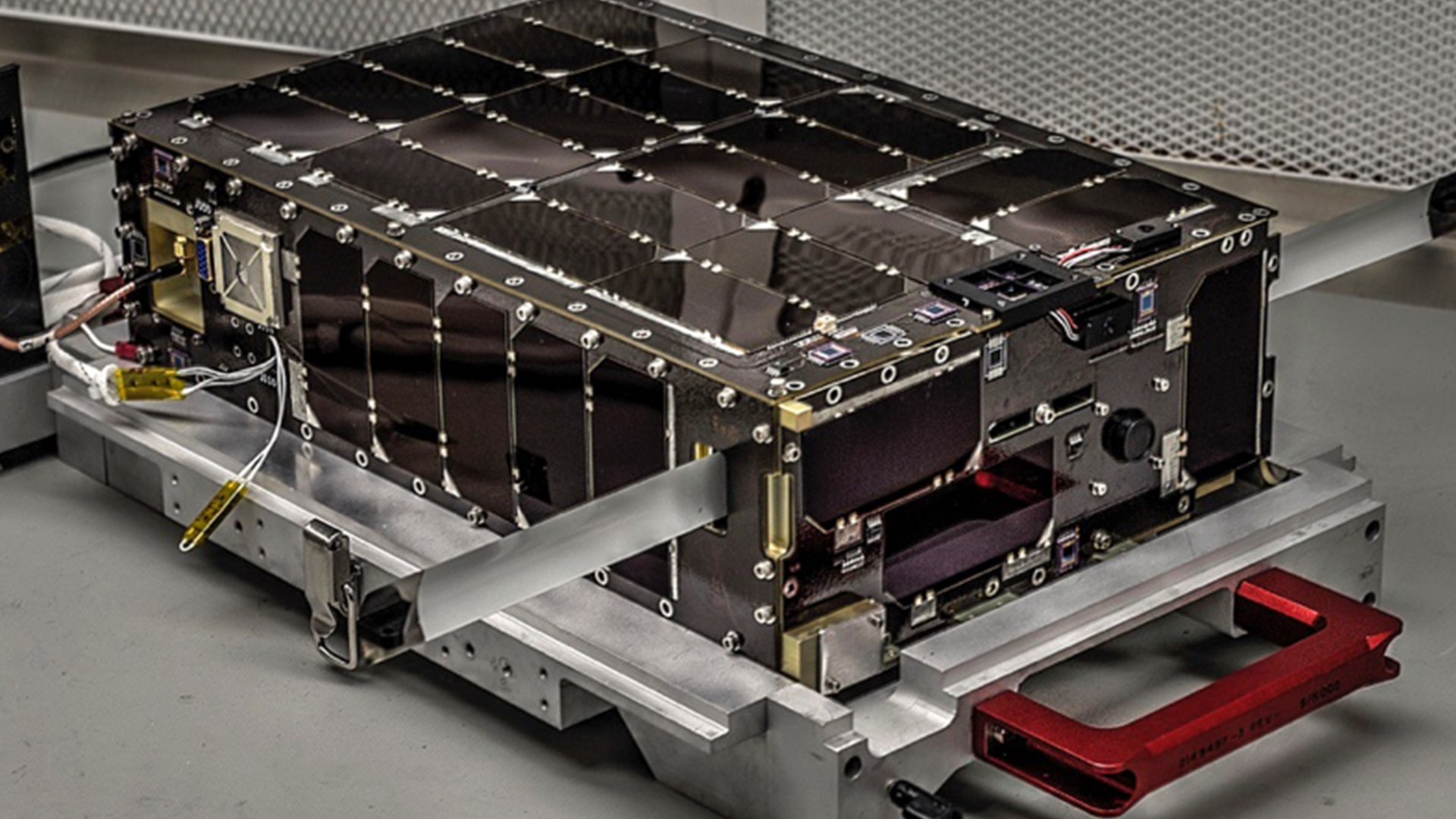Each month the Strategic Partnerships Office will tell the story of a renowned innovator at NASA’s Goddard Space Flight Center and how their technological breakthroughs are brought from the labs to our lives. This month features the Hilbert Huang Transform 2 (HHT2), a two dimensional adaptation to the original Hilbert Huang Transform. This 2D analysis software clarifies distorted images and enables enhanced interpreting of images.
News
Goddard Scientists are Preparing the U.S. Power Grid to Withstand Space Weather
Each month the Strategic Partnerships Office will tell the story of a renowned innovator at NASA’s Goddard
Space Flight Center and show how their technological breakthroughs are brought from the labs to our lives.
NASA is turning the U.S. power grid into a large instrument designed to measure space weather using
geophysical imaging and, after a successful test program, is partnering with more power companies to
increase coverage.
Nonlinear Analysis Tool Finds Uses in Medical Industry
NASA’s Hilbert-Huang Transform. Credit: NASA GSFC
Each month the Strategic Partnerships Office will tell the story of a renowned innovator at NASA’s Goddard Space Flight Center and how their technological breakthroughs are brought from the labs to our lives. This month features the Hilbert-Huang Transform/Real-Time Data Processing System, from innovator Dr. Norden Huang. This nonlinear and nonstationary signal analyzer is being licensed to DynaDx for numerous applications in the medical industry.
Maryland Based Company is Using NASA’s SpaceCube 2.0 to Make Space-Based Processors
Each month the Strategic Partnerships Office will tell the story of renowned innovators at NASA’s Goddard
Space Flight Center and show how their technological breakthroughs are brought from the labs to our lives.
Goddard Space Flight Center licensed the SpaceCube 2.0 design to Maryland based Genesis Engineering
which will produce space based processors.
Mirror Measuring Technology from the James Webb Space Telescope Helps Improve LASIK Eye Surgery
Each month the Strategic Partnerships Office will tell the story of renowned innovators at NASA’s Goddard
Space Flight Center and how their technological breakthroughs are brought from the labs to our lives. During the James Webb Space Telescope’s time at Goddard, technicians assembled and tested 18 large mirrors. The teams responsible for this part of the mission developed a system to test each mirror, and this
system is now used in LASIK eye surgery.
AeroPods available for licensing to teach middle and high school students about STEM
Each month the Strategic Partnerships Office will tell the story of renowned innovators at NASA’s Goddard
Space Flight Center and show how their technological breakthroughs are brought from the labs to our lives.
This month features AeroPods, which allow aerodynamically stabilized imaging and sensing. Inventors Geoff Bland and Ted Miles are licensing this technology to schools aiming to provide hands-on STEM experience to students.
Modulated X-ray Source Licensed by Massachusetts General Hospital (August 2018)
Each month the Strategic Partnerships Office will tell the story of a renowned innovator at NASA’s Goddard
Space Flight Center and show how their technological breakthroughs are brought from the labs to our lives.
This month features the Modulated X-Ray Source (MXS), a tool originally designed to use X-rays for deep
space communication and navigation which is being adapted to advance medical X-ray imaging.
NASA Goddard Space Flight Center to Pilot the Patent Innovation Entrepreneurship Rapid Research (PIERR) Program
Diversity of thought can pay big dividends. A 2015 report by McKinsey & Co. found that companies in the top quartile for diversity are 35 percent more likely to have above median financial returns. When organizations bring new viewpoints to the table, everyone wins.
In order to tap into diverse sources of innovative ideas, NASA’s Goddard Space Flight Center (GSFC) is piloting the Patent Innovation Entrepreneurship Rapid Research (PIERR) program, which allows high school and college students to apply their unique perspectives and find creative uses for patented NASA technologies in areas such as data science and machine learning. The students will receive mentorship guidance from experts and industry leaders, available through a collaboration with a social enterprise organization.
Students from varied academic disciplines will work together to rapidly study a select group of NASA patents. These budding entrepreneurs will work hand-in-hand with NASA’s technology transfer managers and inventors, deepening their understanding of each technology’s potential. At the end of PIERR, students present their findings, having generated entrepreneurial leads and invented new applications for high-tech products. Participating students gain a vast portfolio of skills to amplify their career options, and NASA obtains new ways to bring the technology from the labs to our lives.
PIERR will benefit students and NASA through the creation of currently unimagined start-up industries or commercialization of new products. Equipped with a wealth of newfound knowledge, members of PIERR’s cohort can become the next generation of high-tech entrepreneurs, and NASA gains fresh approaches to exploring technology transfer. The future is here with PIERR.
For more information, please contact:
Brooke Purinton
301-289-7509
brooke.purinton@nasa.gov
Dennis Small
301-286-7960
dennis.a.small@nasa.gov
NASA Goddard Strategic Partnerships Office Participates in Institute of Water Security and Science (IWSS) Spring Conference
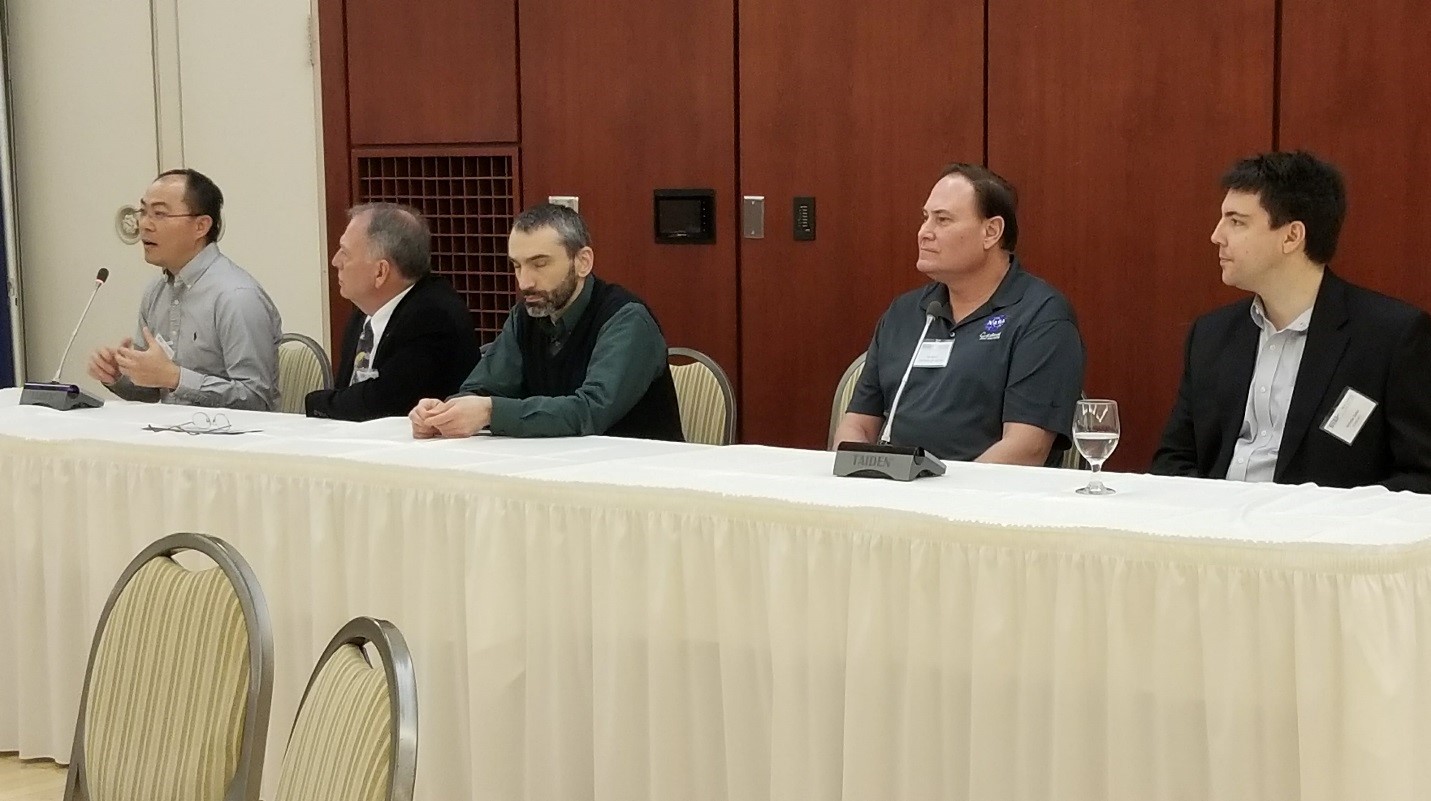
Strategic Partnerships Office (SPO) Senior Technology Manager Ted Mecum (4th from left), participated in an open panel discussion as a representative of Federal Labs and a subject matter expert in government partnerships and technology transfer. Credit: NASA
On February 20th and 21st representatives from Goddard’s Strategic Partnerships Office (SPO) attended the Institute of Water Security and Science (IWSS) Spring Conference in Morgantown, WV at West Virginia University. The conference was attended by approximately 150 attendees and focused on water security and research sciences. Representatives made contacts with the Maryland Chesapeake Bay Foundation as well as university researchers who showed interest in NASA’s capabilities and resources. NASA Goddard exhibited along with the Federal Labs Consortium (FLC), and showcased 5 technologies from Goddard’s technology portfolio that offer potential water and water science commercial applications. Goddard’s SPO arranged for Dr. John Bolten, a subject matter expert in water research and sciences from Goddard’s Sciences and Exploration Directorate’s hydrology division, to present on his research using space-based observations for improved global water security and sustainability. [Read more…]


